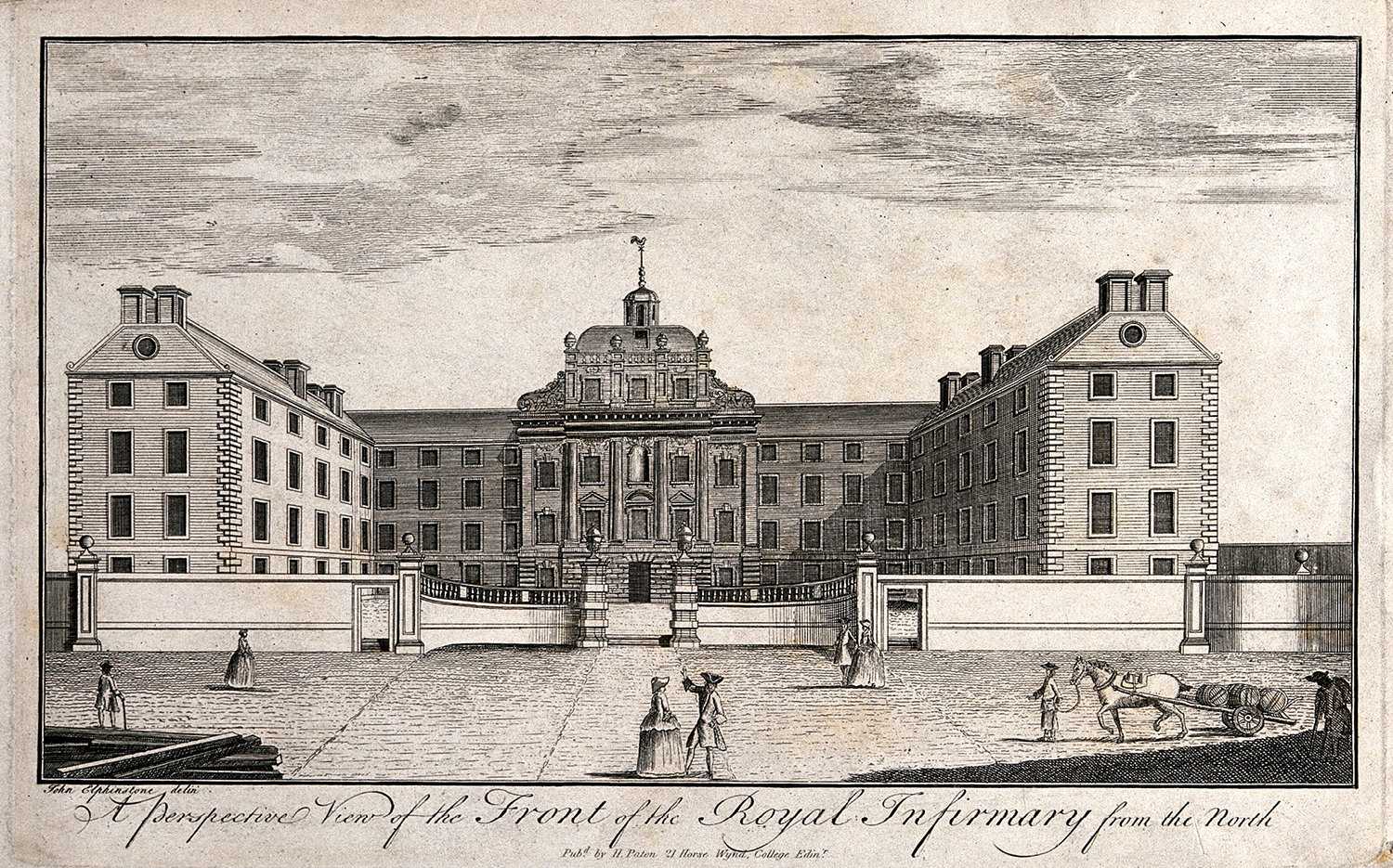The Life of Dr. Robert Knox
Knox was the eighth son of a fairly well-to-do family that lived minutes away from the Royal Infirmary and Surgeon’s Square. Despite smallpox leaving him blind in one eye, he would go on to enroll in the Royal College of Physicians of Edinburgh in 1810 and begin medical classes. Although Knox attended anatomy lectures and private classes in anatomical dissections, he never joined the Royal Medical Society or received any formal training in surgery. Furthermore, “he was not apprenticed to a surgeon, the most usual form of surgical education in the early nineteenth century, nor did he attend university lectures on clinical surgery” (Rosner 82). He completed his medical examinations and M.D. thesis, and therefore earned the title of doctor on an academic basis. These distinctions are important, in that anatomical prowess did not immediately translate to capability as a surgeon; at the time, one was typically apprenticed to and learned from a surgeon directly to qualify. At most, Knox was hired as a military hospital assistant, “checking dressings, changing bandages, [and] keeping accounts” (Rosner 83).

The gruesome beginnings of his practice began when he was appointed as a hospital assistant for a military outpost in South Africa. Chafing against the comparatively limited work and allowance he had to practice scientific inquiry in his military-adjacent position, he turned to dissecting the fresh corpses of local animals. His finesse with a dissection blade was formidable even under these circumstances, and he became a talented naturalist in his writings. However, this problematic zeal had as many drawbacks as it had impressive discoveries. Much of his own writing reveals a pattern by which he viewed his anatomical endeavors: namely that he was more of a research scientist than anything nearing a medical professional. Knox's fascination was exclusively empirical and obsessive, going so far as to send animal specimens home in Scotland for preservation.
There are indications that Knox saw his naturalist endeavors on a much grander scale; that taxonomy and the intricate linkages which existed between all animals signified a greater and more distinguished calling than medicine. Even so, he managed to win a series of successes as an anatomist after dismissal from his post in South Africa (because he interjected himself into a high level personal dispute that did not pertain to him). He became a conservator of the Museum of Comparative Anatomy, a Fellow of the Royal College of Surgeons of Edinburgh, and began to teach up to a hundred students per anatomy class. His emergence as a public figure--and his tendency to be contentious and condescending with his fellow colleagues--resulted in the formation of many enmities. These events would foreshadow his haughty silence in the face of the Burke and Hare murder trials, and refusal to accept even the slightest insinuation of his own wrongdoing.
The Burke and Hare murders--and Knox's ostentatious indifference to the origins of the corpses sold to him--have become so infamous that much of the circumstances leading up to this scandal are little known. William Burke and William Hare were brought to trial in November of 1828 under accusation of several murders. Sixteen bodies, many if not all accepted by Knox for the purpose of anatomical dissection, were attributed to these three men. Hare turned king’s evidence against Burke to escape a criminal sentence, and Burke was sentenced to death by hanging and subsequent dissection. Burke’s remains were placed on display at the University of Edinburgh's anatomical museum, where he remains to this day nearly two hundred years later.
The implication that Knox was a neutral party in the Burke and Hare murders is genuinely false. He was, in fact, central to the outcome of the proceedings. However, this ruling was only possible because the prosecution could offer Hare immunity on the basis of Knox’s destruction--and therefore lack--of evidence. “Burke and his wife Nelly stood trial for the death of the last victim, Mary Docherty, only” because her remains were found and immediately reported before they reached a dissection room (133). In addition, many people had long since caught on to Knox’s lackadaisical evaluation of bodies before this point and condemned him outright regardless of the court’s decision.
Following the Burke and Hare murder trials and the dubious committee report declaring his innocence, Knox was subsequently stripped of every formerly enumerated academic title and left unable to procure work as a lecturer for the rest of his life. It is important to note that Knox was not the only doctor in Edinburgh--or London, for that matter--guilty of foul play. Rather, it was the overwhelmingly public and extreme nature of this case (it likely did not help that Knox was also a contentious figure in academic circles) that made Knox something of a scapegoat for larger social unrest incited by decades of bodysnatching.